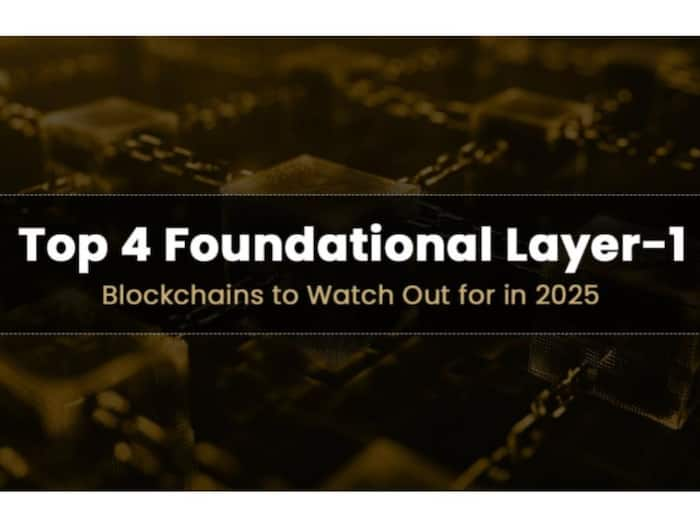
Written By Nishit Raghuwanshi
Edited By: Nishit Raghuwanshi | Published By: Nishit Raghuwanshi | Published: Feb 18, 2025, 09:03 PM (IST)

The cryptocurrency market has surged in 2024, driven by favourable regulations and Bitcoin’s growing role as a strategic asset. This has fuelled demand for Layer 1 (L1) blockchains, the foundation for dApps and smart contracts. However, competition is fierce, with L2 solutions offering better scalability, interoperability, and efficiency, alongside newer L1s that boast enhanced throughput, lower costs, and stronger security. To stay relevant, established L1s must tackle congestion and high fees. With innovation at an all-time high, here are the Top 4 Foundational Layer-1 Blockchains to Watch in 2025.
If we want to talk about specialized blockchains, Manta’s multi-modular ecosystem gained attention in 2024 with 10.6 million recorded transactions, 720,000 wallet addresses and a unique industry-first approach to scalability with a modular ecosystem. Manta specializes in providing a specific function and all other tasks are outsourced to other chains.
Manta has two layers:
Manta Atlantic: The fastest ZK L1 on Polkadot, enabling programmable identities and staking-based emissions.
Manta Pacific: An EVM-native L2 for ZK applications, using a modular hybrid rollup (OP-Stack + ZK-rollups) for scalability and cost-efficiency.
Mantra has had a fantastic year in 2024. According to CoinGecko, its price jumped by an eye-watering 7035.2%. Mantra owes its burgeoning popularity to a growing demand for real-world asset (RWA) tokenization expected to surpass $30 trillion by 2030 as traditional financial institutions look to offer their solutions on blockchain. Mantra has secured strategic partnerships with UAE real estate giant MAG and Zand Bank and operates in compliance with Dubai’s Virtual Asset Regulatory Authority (VARA). The permissionless chain also managed to secure Google Cloud as a validator in perhaps an equally stellar feat.
Redbelly is the first formally verified, patented blockchain built for regulated finance, not crypto. Developed by the University of Sydney, CSIRO’s Data 61, and Block8, it offers inbuilt compliance, verifiable credentials (ZK proofs), and a fork-proof design for real-world asset tokenization. With Web2 simplicity, fixed transaction costs, and certified data, Redbelly ensures transparent, secure, and scalable processes while preventing fraud and double spending—even under duress—at a tested throughput of 15,000 TPS.
Perhaps one of the biggest launches of 2025, KALP is a unique permissioned cross-chain network building Digital Public Infrastructure (DPI) for global use. It is intended for secure and compliant real-world asset tokenization that allows users to transact seamlessly across assets and chains. It’s unique in offering users cross-chain liquidity across all major blockchain networks for simplified real-world transactions and use cases. This is made possible through state-of-the-art cryptographic algorithms, address whitelisting mechanisms, smart contract interfaces and secure cross-chain interactions for everything from asset transfer and smart contract invocation to data sharing and verification across blockchain boundaries.
Each transaction is backed by highest standards of legal compliance, transparency and a network designed for optimum resource allocation to maximize throughput. KALP is designed to service broad-spectrum security and regulatory environments, enforces strict KYC (Know Your Customer) and KYB (Know Your Business) compliance protocols and offers both self-custody and third-party custodian wallets. The best part is their upcoming token launch $GINI and the continuing airdrop campaign!